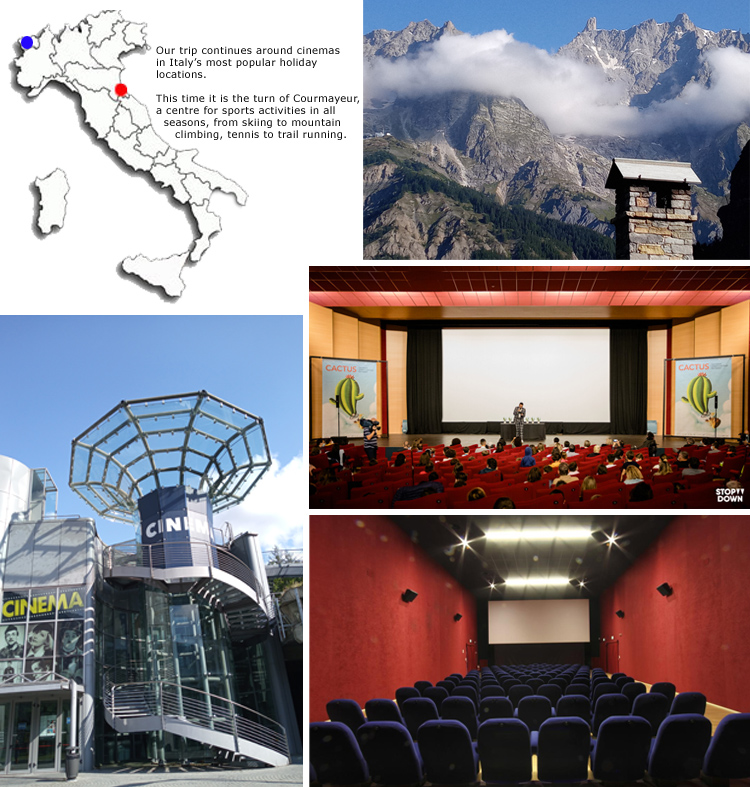|
|
|
Women in Digital Cinema in the MEDIA Salles Newsletter since 2006 |
|
|
|
 |
|
Since some years, MEDIA Salles has been investigating best pratictes in cinema exhibition aimed at reducing the environmental impact. We think this is - more than ever - a key topic and we are glad inagurate in our newsletter a column dedicated to sustainability in the cinema sector: we hope it could be of inspiration for our readers, and invite you to contact us in case you want to share news and ideas on the subject.
The sustainable beauty of the Odeon

It has been a topic of debate over the past couple of months in all the meetings between exhibitors and distributors held in various European countries: the green transition is the real leitmotiv of movie theatres. It began in Riccione at Ciné, continued during the Venice Festival and then in Leipzig, the city where players in the German arthouses cinema hold their yearly meeting, and even more recently in Hungary, where the sector renewed its rendez-vous with the Miskolc Festival.
Here the debate drew inspiration from the report presented by MEDIA Salles on best practices in the four main areas embracing action aimed at limiting the cinema’s impact on the environment: reduction in consumption of power and water; sustainability of food and drinks; waste management and, lastly, but no less important, the involvement of staff, audiences and local communities. In the first area, the “main” intervention involves the use of projectors that consume less power, reduce maintenance costs and last longer: this is why laser technology is gradually asserting itself.
Amongst the early adopters in Europe figures Sena, the leading Icelandic exhibition company which in 2017 had already inaugurated a “100% laser” complex: the Smárabíó in Reykjavík. In terms of “concessions”, the offer of local or organic products and the preference for suppliers who favour recyclable containers and packaging contributes to the eco-sustainability of cinemas, as does the reduction of “throwaway” crockery and meticulous selection.
To encourage these practices, the city of Barcelona envisages tax benefits for cinemas reaching progressively more ambitious objectives in waste disposal and recycling. If many of these measure depend exclusively on the choices - and investments - of exhibition companies (for example the use of power deriving exclusively from renewable sources), there is no lack of action relying on the cooperation of the public. Suffice it to remember the recycling of waste products.
It is therefore essential to involve audiences: here cinemas have a practically exclusive advantage, in the form of their programming. Many theatres offer films, documentaries and cartoons that draw attention to the importance of virtuous behaviour towards the environment.
The UK Green Film Festival , to be held this coming November, will bring this message to a variety of venues, including cinemas in small and medium-sized towns. In Italy, the cinema Massimo in Turin has recently hosted CinemAmbiente.
And on the theme of “green” Italy, we cannot fail to make mention of the research presented by Green Cross Italia, during the Venice Festival, in the context of Sustainable Screens 2021.
What emerges is that 60% of power consumption in Italian cinemas is due to air conditioning, whilst 32% is due to projectors. Of the sample of cinemas analysed - situated in 45 provinces in 14 regions - 68% had not taken any action to promote an efficient use of power over the past three years. Those that had taken action, had concentrated mainly on replacing projectors and on relamping.
Only 1% had insulated the building with climate proofing, whilst 6,7% had installed a photovoltaic system. This is nonetheless a situation that may soon improve. There is no lack of inspiration: at Ciné, Digima presented a system for monitoring electricity consumption integrated with the Theatre Management System, whilst Cinemeccanica proposed a solution for installing a laser light source on digital projectors that at present use xenon bulbs.
There are also several Italian best practices: the Odeon in Florence uses only electrical power produced by renewable sources, thanks to an agreement with Dolomiti Energia. And ad hoc public funding should not be lacking: the National Plan for Recovery and Resilience has allocated 300 million euros for the improvement of efficient power use in museums, theatres and cinemas. To sum up, if a lot of uncertainty weighs upon the future of movie theatres - and this cannot be denied - one thing is certain: the cinemas of the future will be greener.
This article was published in issue no. 184 of Cinema & Video Int'l, the MEDIA Salles media partner.

|
|
|
|
ALL DIFFERENT ALL DIGITAL |
This column hosts portraits of cinemas in Europe and the rest of the world which are quite different from one another but have in common the fact that they have all adopted digital projection.
Courmayeur Cinema
by Virginia Fanin

Country |
|
|
No. of screens |
No. of digital screens |
Italy |
Courmayeur Cinema |
Courmayeur |
2 |
2 |
You’ve decided to spend a week on the snow or a cool summer break on the Italian side of the Alps but you want a bit extra from your holiday? Perhaps to end a busy day with your companions of adventure watching a film? The Courmayeur Cinema will be quite ready to provide what’s necessary by offering you a special, yet relaxing evening out at 1,224 metres above sea level at the foot of Mont Blanc.
Given the present state of the Covid 19 outbreak, it’s as well to specify right now that on 12 July 2021 the Courmayeur Cinema finally re-opened its doors and welcomes anyone with a Green Pass.
The building is to be found in Piazzale Monte Bianco, standing out thanks to its glass and steel elevator and futuristic architecture.
Another reference point is the congress centre right alongside the cinema.
Getting there on foot from the centre is straightforward: it takes just six minutes. Those who wish to come by car can use the convenient underground pay carpark. The cinema is equipped with two theatres, one seating up to 122 spectators and the other, much larger, up to 425. The latter is furnished with comfortable red armchair seats whilst those in the smaller theatre are blue.
In this cinema, described on the web as one of the most modern and well-equipped in the Valle d’Aosta, the warm, enveloping colours of the walls play an important part in creating a comfortable atmosphere suited to viewing a good film.
There is a wide and flexible choice of titles, thanks to screen-sharing, which allows several titles to be offered at different times, according to the day of the week.
There is no lack of special initiatives; while in 2014 the “Month of the Documentary” was hosted, including titles such as “Dal Profondo”, “Sacro Gra”, “Terra Nera”, “Fedele alla Linea” and “TIR”, on 5 June 2021 the Courmayeur Cinema welcomed the closing ceremony of the Cactus International Children’s and Youth Film Festival’s first edition.
But this is not all! In fact the cinema is structured so as to allow for organizing conferences and live shows. As well as the vast reception area, there is an exhibition space and a bar area where buffets can be organized on request, for example for a professional meeting or during a conference. But it’s possible to have breakfast at the bar, too, as its opening times are not the same as those of the theatres.
What do the spectators think of all this?
To get an idea of just how much this cinema is appreciated, it’s sufficient to digit “Courmayeur Cinema” on Google and a host of positive comments open up.
The following are just a few of them, to render the idea:
-
“Comfortable armchair seats with space to stretch your legs… a really fine cinema”
-
“In the cinema category it’s near the top of its class. Pleasant staff, snacks and comfortable seats”
- “At last an intelligent seating arrangement (I’m talking about Theatre 2) with staggered rows of seats. So that the head of the spectator in front of you doesn’t stop you seeing the film. It seems like such a simple thing but it’s not easily found elsewhere!”
All that remains is to try it out personally!

|
|
To quickly get to the previous issues, click on these buttons!
|
|
|
MEDIA Salles
Piazza Luigi di Savoia, 24 - 20124 Milano - Italy
Tel.: +39.02.6739781 - Fax: +39.02.67397860
E-mail: infocinema@mediasalles.it |
Edito da: MEDIA Salles - Reg. Trib.
Milano n. 418 dello 02/07/2007
Direttore responsabile:
Elisabetta Brunella
Coordinamento redazionale:
Silvia Mancini
Raccolta dati ed elaborazioni statistiche: Paola Bensi, Silvia Mancini |
|
|
|











































































